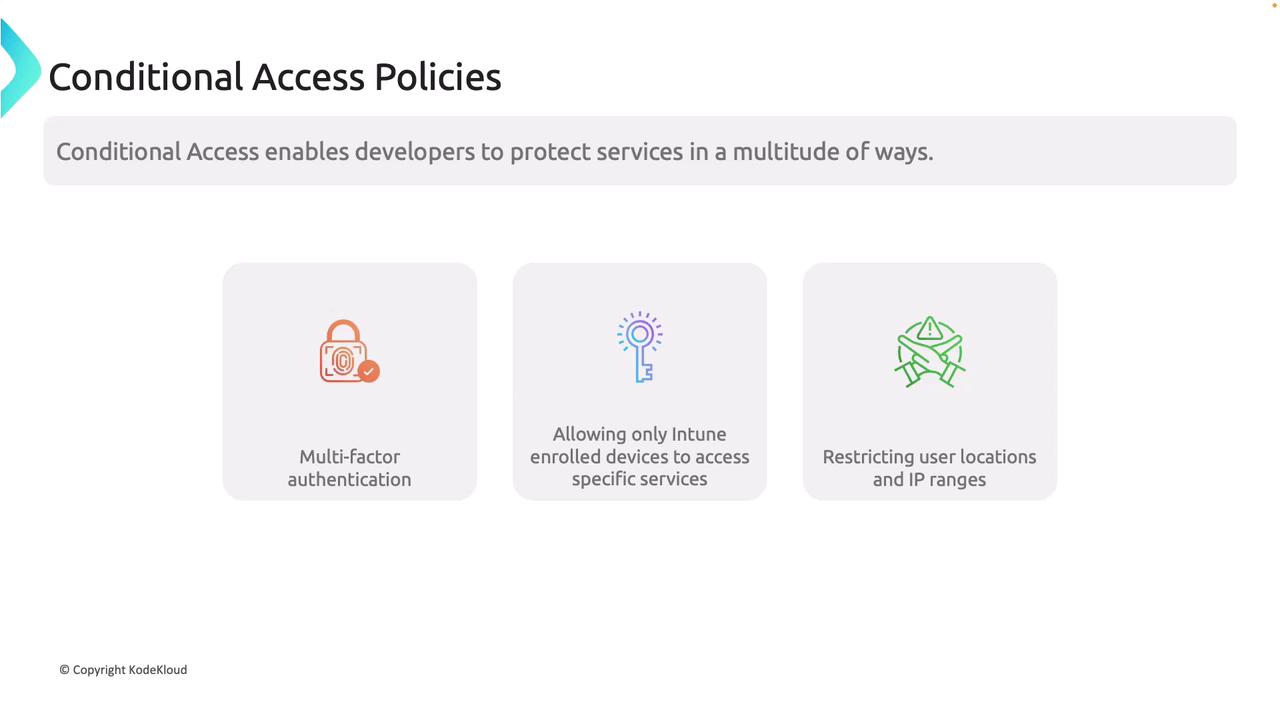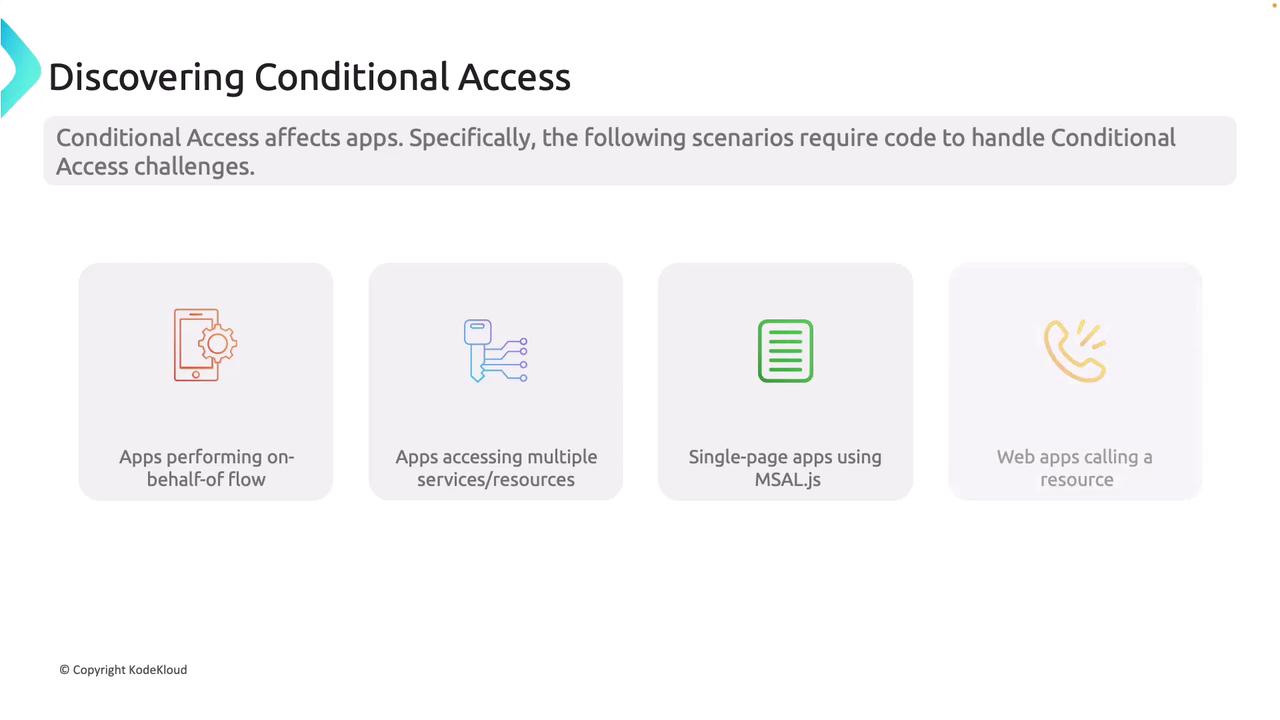AZ-204: Developing Solutions for Microsoft Azure
Exploring the Microsoft Identity Platform
Conditional Access Policies
In this lesson, we delve into conditional access within the Microsoft Identity Platform—a robust service that allows developers to secure applications by enforcing access controls based on various signals such as user identity, device state, location, and more. Conditional access is essential in today’s evolving threat landscape as it enables the implementation of multi-layered security measures, including multi-factor authentication (MFA), device compliance checks, and geographic filtering.
Multi-Factor Authentication (MFA)
One of the most widely adopted conditional access policies is MFA. This security enhancement requires users to verify their identity through multiple steps—typically a password combined with a verification code sent to their mobile device. For example, when signing into an enterprise application, a user may be prompted for a verification code after entering their password to prevent unauthorized access.
Device-Based Restrictions
Another critical strategy involves restricting access solely to devices enrolled in Microsoft Intune, the company’s mobile device management (MDM) solution. This policy ensures that only managed and secure devices can access sensitive applications, significantly reinforcing overall security.
Location and IP Restrictions
Conditional access can also apply location or IP range restrictions. For instance, policies can be configured to permit access only for users connecting from a certain country or trusted network. This additional layer of security minimizes the risk of unauthorized access from unrecognized or compromised environments.

Handling Conditional Access in Applications
Conditional access policies can affect application behavior, necessitating careful consideration during development. Here are some common scenarios:
Apps Performing On-Behalf-Of (OBO) Flow:
When an app acts on behalf of a user (such as calling an API on another service), policy-triggered authentication challenges may occur. The app must be designed to handle additional authentication steps efficiently.Apps Accessing Multiple Services:
Applications that connect to several services with distinct conditional access policies need robust token management. Developers must implement token renewal or dynamic permission adjustments to handle policy variations seamlessly.Single-Page Applications (SPAs) Using MSAL.js:
SPAs built with the Microsoft Authentication Library for JavaScript (MSAL.js) must accommodate conditional access requirements like token refreshes, MFA prompts, or geographic restrictions when accessing Microsoft resources.Web Apps Calling Protected Resources:
Web applications interacting with APIs or other secured resources should handle potential delays or blocks resulting from conditional access policies, particularly those triggering MFA challenges.

The If-Then Logic Behind Conditional Access
Conditional access operates on a simple if-then logic. For instance, if a user logs in from a specific location, then the policy determines whether to grant access, require MFA, or block the request entirely. Developers can fine-tune policies by leveraging signals such as location, IP address, browser type, and device state.
Note
Conditional access is a licensed feature. Detailed demonstrations may be restricted due to licensing, but you can explore advanced courses like Microsoft Azure Security Technologies (AZ-500) for an in-depth understanding.
Next Steps
With the fundamentals of conditional access covered, the next lesson will focus on implementing authentication using the Microsoft Authentication Library (MSAL). Stay tuned for insights on integrating robust authentication solutions into your applications!
Watch Video
Watch video content